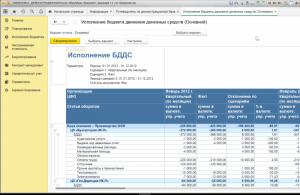It is difficult to imagine reinforcing a strip foundation with your own hands without first familiarizing yourself with the full picture of constructing the foundation of a future country house.
Do-it-yourself reinforcement of a strip foundation is an integral part of the process of creating reinforced concrete, which is subsequently poured around the perimeter of the house. The feasibility of using this method is undeniable, since it is thanks to the presence of metal in the structure that the base can withstand even the most complex building projects.
Foundation reinforcement will protect your country house from cracks and other defects caused by soil vibrations. The double safety of your home can be guaranteed by using a special vibrator.
Before you begin reinforcement work, pay due attention to the calculations, in which the width of the foundation and the thickness of the walls play an important role.
The amount of required reinforcement is determined depending on the weight of the structure, but this does not affect the diameter of the rods; most often, 10-16 mm rods are used.
So, if you have already decided on the diameter of the reinforcement, you can see how many rods are contained in one ton:
- 1 cm - 1620 m;
- 1.2 cm-1126 m;
- 1.4 cm-826m;
- 1.6 cm-633m;
Reinforcement must be done with 2 belts of four rods. Longitudinal reinforcement is placed five cm from the extreme point of the base on both sides. Be sure to leave a space of 25 cm between the transverse rods. The connecting points of the rods must be secured; for this you can resort to the welding method or tie the reinforcement with wire. The second method is more preferable, since welding is a costly undertaking, which can subsequently bring a lot of trouble. Welding work can significantly reduce the efficiency of the rods involved, since in this case the rods are affected by high temperature. In the case of tying, you can save your time and money; to complete the work you will need pliers or a gun for tying reinforcement.
Strip foundation reinforcement technology
The technology of reinforcing strip foundations requires careful work at all stages of the operation. So, the reinforcement of the base occurs simultaneously with the installation of the formwork, or after it has already been installed in place. By the way, a place means a pre-dug trench in which sand is laid out in neat layers. It is important that the inside of the formwork be protected from the moisture released by the concrete; glassine, which is placed on the surface of the boards and secured with a special stapler, will help you with this. Most sources say that the technology for reinforcing a strip foundation involves removing the formwork 3 weeks after completion of the procedure.
By this time, you should already have reinforcement in the required quantity; it is calculated based on the total load on the foundation.
The greater the mass of the room, the denser and heavier the rods should be.
Next, our task is to create a volumetric metal frame from rods inside the entire trench. You can imagine the future model of the frame; these are rectangles that are connected in the corner part of the building. Horizontal rods are tied to vertical steel rods located inside the pit. The distance between the vertical reinforcement bars must be at least two meters. All reinforcement must be laid in such a way that there is 5 cm left to the edge of the foundation. Now it remains to see again whether we have secured the rods well at the intersection points.

What to do if your reinforcement does not reach the outer surface of the base? Everything is very simple, usually in such cases bricks are placed on the edge of the foundation, and rods are placed on top. Even if your reinforcement allows you to do without laying bricks, please note that the rods should still be located slightly above the bottom of the trench, and therefore the frame must be raised above the bottom of the pit by at least 10 cm.
The next stage of work is related to the arrangement of holes for ventilation and other outlets, after which we begin pouring the foundation. For this, we will use concrete marked with the designations 200 M and 300 M. However, before the operation is carried out, a fishing line is pulled onto the formwork, which will show the upper limit of the pour. The amount of concrete required for the site allocated for construction is calculated based on the width, height and length of the foundation strip. In most cases, standard widths from 20 to 40 cm are used. We get the height if we sum up the depth, which is usually 1.5 m and the part protruding above the ground, most often 40-50 cm. The length is determined based on the following data: perimeter , protruding part and height.
after carrying out all the operations described above, it is necessary to carry out waterproofing using roofing material and mastics, you can also use resin or penetron, and then fill the sinuses of the base with sand. You can also think about heating a country house already at this stage of construction.
Methods for reinforcing strip foundations
Of all the methods of reinforcing a strip foundation, experienced builders prefer hand knitting. First of all, using this method, you will not have to buy new tools, which at this stage will allow you to reduce the cost of building a structure. In turn, methods of reinforcing a strip foundation using the knitting method are divided into types, depending on exactly how the procedure will take place, but they all begin with the first loop being thrown over the spiral grooves.
Knitting with wire. A very simple method for which you will need 180-200 mm of wire bent in half (based on 12 mm reinforcement). The coverage of the fastened parts should be made so that the ends on both sides are at least 3-5 cm. Holding these ends, try to insert the crochet hook into the loop, and then rotate the wire until it curls.
A method of connecting rods using paper clips. You can purchase these small but very useful products at any hardware store. The method of connecting with paper clips greatly simplifies the work with rods in hard-to-reach places. The principle of fastening is very simple, hooking onto one rod, the other end of the paper clip covers the other rod and brings them together.
Lap joints. This type of connection is used to lengthen the reinforcement cage, including in places where the nodal points of the base walls are located. The overlap in length must be at least 30 rod diameters, this means that, for example, if the diameter of your reinforcement is 1 cm, the required length will be 30 cm.
Bending rods. To do this, we need to make a small device; for this we need to take 2 steel pipes, with a diameter of 1.5-2 cm, which will reach 80-100 cm in length. First, take a short pipe and cut 2 identical grooves in it, the depth of which will be at least 5 cm, and the distance between the holes should be 14-16 mm. Next, you need to bend the cut parts in accordance with the radius and, what is also important, at a right angle. The task will be made easier for you by using a blowtorch, which can serve as an excellent stop when bending. So, after the pipe is fixed to a suitable base, we insert one end of the twig into the short pipe, and with the other side we insert it into the long one and bend it.
Correct reinforcement of strip foundation corners
The topic of proper reinforcement of the corners of a strip foundation deserves a separate point in our article, since the reliability of the operation of the future cottage depends on this operation. It just so happens that the maximum load falls on the corners of the building, but proper reinforcement of the corners of the strip foundation will protect your house from deformation. In its proper form, the picture should resemble an armature, the first end of which goes in one direction, and the second rests against the other wall. To connect the rods, as mentioned earlier, it is best to use wire. This is especially true when you consider that not all types of rods are made of material that can be applied to by welding. Experts say that welding creates some weakness in the seam area and also makes the rod thinner.
In no case should corners be reinforced with a simple crosshair; the rods must be connected with an overlap, the length of which will be at least 5 cm, with a diameter of 12 mm. Most often this is done using the overlap and foot method, and sometimes using an L-shaped clamp.
Reinforcement of the base of a strip foundation
Reinforcement of the base of a strip foundation begins with the arrangement of the base itself, which must be buried to the roof of the stable layer. In general, there is a lot of talk around determining the place for the sole; some believe that the best place for it is the third layer from the surface. One thing is certain, if the choice falls on the top layer, then in the future you will probably have to develop the sole further and strengthen the lower layers.
An advantage of reinforcing the base of a strip foundation, as well as its construction, is the fact that the operation can be performed at any time of the year, even in winter. However, it is very important to determine the nature of the soil with which you will have to deal; geological and hydrogeological conditions will help you with this. The soil must be able to resist the load of the future room. It is imperative to take into account the likelihood of soil heaving during cold seasons, as this often leads to destruction of the foundation. Note that clay soil types most often swell, but coarse sands practically do not have such properties. This suggests that if you have to deal with clay terrain, then it is very important to lay the sole to a depth not less than the freezing level, and on coarse soil, this depth can be reduced by 0.5-0.6 m.
The reinforcement process requires a careful approach and special attention to the corners of the foundation. At the junctions of walls, experienced builders recommend installing rods bent at an angle, but in this case they can do without creating joints, that is, ultimately, the reinforcement should not rest against the corner. Don't forget to make a small number of holes for ventilation and start pouring concrete.
Reinforcement of a shallow strip foundation
Reinforcement of a shallow strip foundation is ideal for light structures, such as outbuildings or wooden houses. Many will be pleased with the news that carrying out the procedure for constructing a shallow strip foundation is not at all a costly undertaking in comparison with a buried analogue. It is also noteworthy that the design allows you to have a small basement. However, construction should be avoided if we are talking about excessively heaving soils.
The reinforcement of a shallow strip foundation is characterized by its shallow depth; work is carried out above the soil freezing line. The reinforcement procedure has a preparatory stage, in the form of creating wooden formwork. Inside the formwork, the walls must be covered with glassine or roofing felt, which must be dismantled upon completion of the work.
The shallow strip foundation is reinforced in two stages. To begin with, the bottom of the pit is covered with reinforcement; the next layer of rods should be laid on raw concrete before completing the procedure. The reinforcement parts must be tied together with binding wire.
A shallow foundation, like its counterpart, requires work to create a sand cushion. This greatly protects the structure from deformation. It is important to remember that a structure of this kind must be filled before the onset of cold weather. If construction is stalled, temporary insulation can be used. You can insulate the foundation using straw, slag wool, expanded clay or sawdust.
Under no circumstances should construction work be started from a foundation on frozen ground.
Experts recommend improving the quality characteristics of the walls, namely making them more rigid by using additional reinforcement connections. This will help save the house from subsidence of the soil, and as a result will reliably protect it from destruction.
To ensure the stability and reliability of your future home, you need to learn how to properly reinforce the foundation. When building a house, bathhouse or garage, many beginners have a question about how to properly lay the reinforcement when reinforcing the foundation.
The main disadvantage of concrete is that it does not respond well to rupture, even despite its excellent resistance to loads. Therefore, to eliminate this drawback, it is reinforced when pouring.
The reinforcing mesh is laid near the base and in the upper part of the base, which increases the strength of the foundation in both tensile and bending. After the reinforcing mesh is laid, vertical reinforcement of the foundation is carried out. Vertical reinforcement connects horizontal reinforcement into a single complex.
According to the requirements of construction SNiP and GOST, vertically mounted rods must be placed in increments of every 50-80 cm. Regardless of the type of reinforcement, the rods must be additionally protected. To do this, they are deepened by 70 cm for the lower frame and 5 cm for the upper part.
If a shallow strip foundation is installed, then the rods of horizontally installed reinforcement under the foundation are mounted more often - every 20-30 cm. Then the structure is tied together using thin wire. Reinforcement of the strip base for a private house, barn, garage is carried out using 2 to 4 reinforcement rods in each belt.
The technology of foundation reinforcement involves installing reinforcing rods along the entire perimeter of the foundation at a distance of no more than 80 cm. The minimum distance does not exceed 50 cm. If all norms and sheaves are met, the structure will be more rigid, and the frame will retain its shape even after concrete is poured.
Materials and tools
To speed up the process of reinforcing the foundation, you need to select all materials and devices in advance so that during the work you do not have to be interrupted by searching for missing elements. To reinforce the foundation you will need the following tools and materials:
- Bulgarian;
- device for bending reinforcement;
- clamps;
- wire for tying reinforcing bars;
- connecting clamps;
- reinforcement cutters;
- hammer;
- pliers;
- roulette.
Before moving on to the main work, you need to choose the right fittings. To reinforce the foundation, hot-rolled steel rods with a diameter of 1-2 cm, grades “A” - “W” are used.
It is necessary to determine which rods to use for the foundation at the stage of planning the work and drawing up a diagram of the future structure. So, auxiliary rods should be 0.5-1 cm in diameter, and the main ones - 1-2 cm.
If it is not possible to purchase a special device for tying reinforcement under the foundation, you can quickly make a convenient and functional homemade device. To make it, you need to select two pipes of strictly defined sizes. The first pipe should be 80-100 cm long, and its internal diameter should be 1.5-2 cm. The length of the other pipe should be 50 cm.
First, use a grinder to cut two identical grooves in a short pipe at a distance of 1.5 cm from each other. After this, the pipe is connected at an angle of 90 degrees. To make bending easier, the pipe can be preheated with a blowtorch.
The pipe is fixed to the base, after which you can proceed to bending the rods. One end of the reinforcing bar is inserted into a long pipe, the other into a short one and bent.
Reinforcement stages
In order for the structure to be durable and strong, it is necessary to follow a certain sequence of foundation reinforcement. The sequence of work is as follows:
- Determination of the load on the foundation.
- Installation of formwork.
- Carrying out horizontal reinforcement.
- Carrying out vertical reinforcement.
First of all, they calculate what load the future structure will have to withstand. This will determine how much reinforcement is needed for the foundation. In most examples, the calculation of the number of reinforcing bars takes place for a 6x6 m house.
The structure is reinforced with reinforcement with a diameter of 1.4 cm. The foundation of the house is reinforced with two reinforcement belts.
Reinforcing bars are laid longitudinally, 5 cm away from the surface. This must be done both above and below. Thus, the consumption of reinforcing bars will be equal to 24 m over the entire period of the house plus 6 m for the internal wall, in total - 30 m. If you plan to install a stove in the house, you need to add another 4 or 6 m to this figure, since for the stove too you need a reinforced base. If you want to make the foundation more durable, you can lay it in 4 rods. The total consumption of reinforcement in this case will be 120 m for a 6x6 m house.

After selecting the rods, you can proceed to installing the formwork and after that begin laying the reinforcement in the formwork. Rods equal to the length of the base are driven into the bottom of the trench. Since such rods will not take the load, they serve for further fastening of the reinforcing mesh, which avoids its deformation when pouring the solution.
Horizontal ones are attached to the vertical rods so that they are attached at least 5 cm from the edge of the supporting structure. For a more uniform installation of the reinforcement, you can use fragments of bricks.
Preparatory work, including the installation of formwork, allows you to correctly reinforce the foundation. In domestic conditions, wooden formwork is most often used; it can be made from alder or aspen. It is important that all boards are the same thickness, and their width is about 15 cm. In addition to boards, formwork can be made from inventory panels.
First, a trench is dug in the desired area, then wooden formwork is installed. Reinforcing bars are installed every 2 m, onto which the frame will later be installed. Then all the rods are connected to each other with knitting. But this method is only possible for reinforcement with a cross-section of less than 2.5 cm. Thicker rods are connected by welding.
After the installation of the frame is completed, the foundation is filled with high-quality cement mortar.
Methods of knitting reinforcement
There are several basic ways to tie reinforcement under the foundation. The connection of reinforcement is carried out in different ways:
- welding;
- dressing;
- overlap.

In this case, the connection using a dressing is considered the most durable, since it does not complicate installation and does not change the properties of the metal.
To tie reinforcement under the foundation, you will need 1 mm thick wire and a special hook with which the wire will twist around the rod. Instead of a hook, you can use regular pliers.
First, cut a piece of wire 30 cm long and fold it in half. A folded piece of wire is used to tie the junction of the rods diagonally. The hook is inserted into the loop, the free ends of the wire are grabbed with it and tightened until the connection becomes strong enough. It is important not to overtighten, as the wire may break. Knit all other reinforcement connections in the same way.
In some cases, smooth reinforcement is used instead of standard reinforcement. Then the procedure for reinforcing the foundation becomes very difficult, since the hooks constantly bend during work. Therefore, in this case, it is better to use a special knitting gun for reinforcing bars.
If a large load on the frame is expected, the reinforcing rods are connected using welding seams. Depending on the thickness of the rod, different types of welding are used. Thin rods (less than 2.5 cm in diameter) are joined by spot welding, and thicker rods by arc welding. Reinforcing rods less than 4 cm thick are fastened with a short seam.
To extend the reinforcement under the foundation, another method is used: overlap. It can also be used to connect at node points. The optimal overlap length is calculated based on the thickness of the reinforcement: the diameter of the rod is multiplied by 30.
Possibilities of foundation reinforcement
It is quite possible to build a continuous strip foundation yourself. It is enough just to study the requirements of the standards and snips.
First, the reinforcing mesh is laid. This can be done in several layers - their number depends on the parameters of the foundation. The pitch of the frame mesh is no more than 20 cm. Since the width of the strip foundation usually does not exceed 60 cm and the height is 1 m, making it yourself, in accordance with the rules and snips, will not be difficult.
To build a strip foundation, it is better to use ribbed reinforcement, as it will provide better structural strength. The columnar foundation must be poured correctly - so, in accordance with GOST and SNiP, the reinforcing bars must protrude 10-20 cm above the surface.
A slab foundation requires a more rigid structure, so it must be reinforced. The reinforcement network is secured with a weld, which ensures the greatest strength and rigidity of the structure. The frame must be completely covered with a layer of concrete mortar, otherwise the slab will break.
Can be up to 30 cm. The distance between the reinforcing bars must be the same.
The strip foundation is a strip of reinforced concrete that runs along the entire perimeter of the building under the external load-bearing walls, as well as under the structural partitions located inside.
A notable feature of a monolithic strip foundation may be the identity of the cross-sectional shape of each of its fragments. The main advantage of this type of foundation is the ease of its production when compared with pile or slab foundations.
The main material for the production of a monolithic strip foundation is considered to be concrete, created from sand, cement and water mixed in a known proportion. Since hardened concrete cannot boast of the necessary strength and resistance to the influence of various causes (mechanical loads, moisture, temperature changes, etc.), there is a need to specially strengthen its structure.
Ready strip monolithic foundation
In order to solve this issue, it is successfully used concrete reinforcement– adding metal products to its internal structure, which, due to their own plasticity, add the required hardness to the finished product.
Methods for reinforcing strip foundations
The strip foundation is regularly subjected to various loads. This happens due to soil shifts. Soil vibrations occur as a result of the influence of various forces on it, the most common of which is considered to be the force of soil heaving. In order for the foundation to successfully resist such forces, it is recommended to reinforce it. Reinforcement blocks the formation of cracks or other flaws in the foundation.
Correct reinforcement of the tape and the corner part of the foundation
Main frame made of reinforcement
The reinforcement scheme for a strip foundation is quite trivial, but in order to make this scheme it is advisable to know a few points. First you need to know that several types of reinforcement are used to prepare the reinforcement frame. Longitudinal reinforcement is usually a ribbed rod with a diameter of 12 mm. Vertical and transverse rods are usually smooth, their diameter is smaller than that of longitudinal ones.

Example of strip foundation reinforcement
The reinforced frame for the strip foundation is assembled in advance and installed in the finished form into the formwork. Since it is impossible to determine where the greatest deformations will be, it is best to make three levels of longitudinally directed reinforcement. If it’s shallow, then 2 is enough. Smooth rods are used to form racks on which longitudinal ribbed rods will be mounted.
First of all, it is advisable to assemble the racks. It is best to assemble them on a pre-made template. Then a rod of suitable size is cut, formed on a template and tied with wire for knitting. A special crochet hook is used for knitting. It can be purchased at one of the construction supermarkets.

When the required number of reinforcement frame racks has been prepared, these racks should be connected to each other in 3 longitudinal belts, using a ribbed rod with a diameter of 12 mm. They are also connected using wire. The distance between the posts should be approximately 300 mm. Since the width of the foundation strip is usually less than 400 mm, the width of the reinforcement cage will also be 300 mm. The distances between the frame and the formwork located at the top, both below and on both sides should be 50 mm.
We reinforce the corner part of the foundation
When reinforcing the foundation strip, it is also worth paying special attention to the reinforcement of the corners. It is realized using bent rods. One end of the rod is bent into one wall, and the other end into the other wall. The transfer of rods to another wall must be more than 40 diameters of the reinforcement. If the rod is not enough to prepare a bend for another wall, then the torn rods at the corner are connected with an L-shaped rod. You also need to pay attention to the fact that in the corners the distance between the racks of the reinforcement frame should be half as much as in a strip frame.

High-quality reinforcement of the foundation strip
To summarize, it is advisable to note that it is easy. However, it will take a lot of time and work. In addition, there is no need to be greedy with the reinforcement frame. It significantly increases the stability of the building’s support and in the future you will not have to worry about the reliability of the foundation.
Video on reinforcing a strip foundation
A brief and very visual video instruction on reinforcing a strip foundation and its construction.
Where does reinforcement begin?
Before starting the production of a reinforced strip foundation, it is recommended to carry out preparatory calculations of the actual load on the foundation. Next, in full accordance with the obtained value, the required reinforcement is selected according to the required cross-section (for example, reinforcement with a diameter of less than 12 mm is perfectly used when reinforcing a strip foundation for the construction of a garage or frame building and is absolutely inapplicable for implementation in the foundation of a brick building).

Steel bars used for foundation reinforcement
Since the stability of the strip foundation fully influences the final stability of the entire house, it is advisable to entrust the calculation of the diameter of the required reinforcement to professionals, who will also know the most appropriate step for installing the reinforcement. The next fundamental parameter of a strip foundation - depth - is determined from the results of studying the soil.
Methods and technologies
The initial operation of producing a strip foundation is the installation of removable wood formwork. Since wood is a material that absorbs water well, to prevent this, glassine is used, mounted to the formwork with a stapler. The bottom of the trench made for the strip foundation is covered with a layer of broken bricks approximately 50 mm thick. It will become the basis for the reinforcement frame.

Pouring strip foundation with cement
One of the main criteria for the correct reinforcement of a strip foundation independently is strict adherence to the distance from the internal iron structures to the external surface. It cannot be less than 50 mm. The implementation of these rules will make it possible to make a foundation of such a structure that all reinforcement components will be placed inside the concrete.
This will ensure that the criteria necessary to give the foundation the expected strength and increase its durability will be met.
The technology for the production of reinforcement implies a specialized structure for its installation, the type and quality of which really determine the characteristics of the final object (foundation). The form of reinforcement is almost always a metal frame, the rods of which are placed at a distance (step) from each other strictly described in the project. This parameter depends on the desired foundation depth and is in the range of 100 – 250 mm.

This is what the reinforcement frame of the foundation looks like
Limits are also imposed on the volume of the reinforcement cage cell - its length is taken to be 400 mm and its width is 300 mm. The depth of such a cell is determined by standards for high-rise buildings, when the load on the foundation exceeds the average values, and is 750 mm. However, in the case of building a country house, the parameter of the depth of the reinforcement cage cell does not play a special role.
The methods of fastening reinforcing rods to each other are also affected by stability and safety restrictions. It is not advisable to make such connections by welding, since with all this, the physical parameters of the metal change at the point of the weld - its thickness decreases. The best solution in this case would be to use a wire connection. With all this, it does not hurt to ensure the integrity of the rods (without intermediate connections), which has a positive effect on the strength and stability of the reinforcement frame. One of the methods of increasing the strength of a strip foundation would be to install ventilation holes (more than 3) in the basement area of the foundation. In addition, the depreciation coefficient of the foundation also increases and the formation of rottenness is blocked.
Formation of reinforcement frame
The process of producing a reinforcement frame begins with the installation of reinforcing bars along the perimeter of the foundation by driving them into the ground. Next, the lower and upper chords are tied along these rods, and in order to achieve the required rigidity, absolutely the entire height must be filled, and it is advisable to install the reinforcement along with the installation of the formwork. To perform the tying, a knitting wire and a special hook are used. The finished frame will have the necessary strength and stability to avoid distortion of its shape during concrete pouring.

Unless otherwise specified in the project, reinforcement is carried out using standard methods: vertically in pairs (step 300 mm) or horizontally in pairs (step 2000 mm). When implementing the horizontal type of reinforcement, an indispensable condition will be the use of vertically laid rods at the lintel connections. The quantity, diameter, length and precise placement of each rod is recorded in the project. In the absence of information of this kind, the frame is implemented with 2 rows of vertical reinforcement. They are fastened in horizontal rows, the number of which is determined by the depth of the foundation.
For the production of concrete mixture, high-quality concrete grade M200 is used.
Video on DIY reinforcement technology
Who else but the French knows how to carry out proper reinforcement? Modern European technology is demonstrated using the example of a strip foundation.
Final processing
It is advisable to provide the finished foundation with the required protection from water. For this, after the final hardening of the concrete, which will take about 7 days, the outer plane of the foundation is covered with bitumen mastic, onto which a waterproofing material (roofing material, cellophane, etc.) is glued.

Ready-made reinforcement frame for the base of a wooden house
In addition, it is advisable to treat the soil touching the foundation with a polymer mixture of a binder type. Finally, the layers of the foundation cavities are filled with sand. Any layer is properly compacted and filled with water.
Nuances
Higher-quality reinforcement for a strip foundation comes out when adjacent reinforcement bars are placed in a perpendicular order (“in a cage”). To create a strong bundle of rods, annealed iron wire and knitting guns are used.
The lining of bricks, which serves as the basis for the reinforcement frame, preventing its interaction with the ground, can be replaced with special eraser holders. However, the introduction of broken bricks is many times more effective and profitable.
Fittings
This is a traditional material for creating the frame of foundation structures. It is used in strip foundations, pile foundations, column foundations and prefabricated reinforced concrete foundations. Class AI reinforcement is used to create a reinforcement frame in the foundations for “light” houses: frame, wooden, less often for houses made of foam concrete and aerated concrete, and other lightweight structures. This is due to the fact that AI has a circular cross-section in cross-section and a smooth surface. Because of this, its adhesion to concrete decreases. The diameter of the reinforcement used is from 6 mm and above. Calculated at the house design stage.
Class AIII fittings are made of alloyed and high-quality steel with increased strength characteristics. It is ribbed in cross section. The surface pattern can be of several types: ring, crescent or mixed. Reinforcement with a ring profile is designed for massive structures due to its high adhesion to concrete. Reinforcement with a crescent pattern can be used in structures subject to tensile loads. For tensile loads, reinforcement with a larger diameter is used.
The diameter of the reinforcement is calculated at the design stage. For “light” houses with relatively low weight, reinforcement with a diameter of 8-10 mm, or mounting 6 mm, is allowed. In houses with heavy walls, reinforcement with a diameter of 12-14 mm is used to reinforce the foundations.
Non-carbon steel reinforcement can be welded when preparing the foundation frame. Welding of carbon steel reinforcement is not recommended. The weld area will be fragile. It is better to knit the reinforcement with tying wire.
The fittings are produced in coils and in the form of rods. Reinforcement with a diameter of 6-10 mm is supplied in coils. Large diameter fittings are supplied in rods. Standard rod lengths: 6 m, 9 m, 11.7 m. The maximum diameter of the manufactured reinforcement is 32 mm.
Composite reinforcement
Its main advantage is its significant corrosion resistance and inertness to any aggressive environment. Such characteristics make it possible to reduce the diameter of the reinforcement when reinforcing foundations without reducing the strength of the structure as a whole. The use of reinforcement will make it possible to reduce the protective layers of concrete. The calculated and expected durability is assumed to be about 75 years. Based on materials, composite reinforcement is divided into: glass, basalt, and Kevlar.
The advantages of composite reinforcement: strength is 1.5 times higher than steel, is not subject to corrosion and is 3.0-3.5 times lighter than steel. It has dielectric properties and is radiotransparent. Frost-resistant. The coefficient of thermal expansion (CTE) of composite reinforcement is equal to the CTE of concrete. With a lot of advantages, there is one technical drawback - low heat resistance.
Composite reinforcement is more expensive than conventional reinforcement. But there will be an article of savings on the diameter of the reinforcement used. To reduce costs, you can use a rubble concrete foundation, when coarse aggregate is added when pouring concrete: broken brick and rubble stone (savage), crushed stone and gravel.
Fiber concrete
A material that is gaining popularity when pouring foundations is reinforced concrete. The properties of concrete depend on the type of fibers. Fiber-reinforced concrete is used for pouring strip foundations and for complex reinforcement to improve the quality of the foundation.
To reinforce concrete, different types of fiber are added. Fiber is a waste product from the production of nails and cutting of steel wire for steel fiber. Basalt fiber is made from basalt fibers. Similarly, glass fiber and polymer fibers, in particular polypropylene, can be added to concrete. Textiles are added.
Adding fiber increases impact resistance by a fantastic 500% and abrasion resistance by 50%. In this case, 900 grams of propylene fiber per 1 cubic meter will be sufficient. m of concrete, or 20-50 kg of steel fiber per 1 cubic meter. m.
These additives are designed to perform the function of reinforcement in concrete, increasing crack resistance and resistance to deformation. Such qualities as frost resistance and water resistance are improved. Adding fiber to concrete lightens the weight of structures made from it. Along with fibers of various natures, binders and modifying additives are added to fiber-reinforced concrete. All together gives concrete completely new properties, which can significantly reduce construction time and save material consumption.
The foundation is the part of the building that is located below and takes the main loads, transferring them to the soil layers. There are several methods for making a concrete base. Builders choose one method or another depending on the characteristics of the soil, the mass of the structure and other factors. Thus, when constructing low-rise buildings, strip foundations are most often laid. It is important that the concrete base of the building is strong and durable. To strengthen it, experts resort to. It is important to take into account that different types of concrete foundations require the use of different screeds and reinforcement methods.
Benefits of foundation reinforcement
Installing reinforcement helps make concrete higher quality and stronger. Consequently, a building that stands on such a foundation will be stable and durable. The use of a screed is necessary so that over time the base is not exposed to various factors. The screed helps strengthen the structure.
Knitting the reinforcement frame
Knitting reinforced mesh at each corner of a concrete structure requires special care. The rods are bent, and the overlaps are hidden in cement walls. To determine how strong the reinforced tie for the base screed is, you can stand directly on the frame. A properly made structure will support the weight of the worker and will not deform. The reinforcement bars should be placed as follows:
- Before knitting and pouring concrete, you need to calculate the load of concrete on the base. This value will allow you to determine the consumption of building materials (diameter and volume of rods for reinforcement).
- During the manufacture of the frame, special attention should be paid to the possible maximum load that will be exerted on the base due to soil deformation.
- To make concrete stronger, the reinforcement should be placed in concrete mortar to a depth of five centimeters.
Types of reinforcing mesh for foundations
 On the modern building materials market there are four main types of reinforced mesh, which are used for screeding and other work:
On the modern building materials market there are four main types of reinforced mesh, which are used for screeding and other work:
- Working. When working with foundations, builders use this product to counteract the stretching and pressure that occurs under loads from both the outside and the inside.
- Distribution. With its help, you can secure the rods of the working reinforcing mesh - this will contribute to the correct distribution of loads.
- Assembly room. Such reinforcement is used when installing frames in the desired position. After filling the foundation with concrete, the reinforcement can be dismantled.
- Clamps. They are used to create frames and carry some loads. Clamps are similar to distribution reinforcing mesh.
In addition, the fittings can be smooth or corrugated. The use of a corrugated frame makes it possible to increase the conjugation of concrete and reinforcing screed.
Reinforcement rules
Installation is a complex process, the correct execution of which will determine the strength of the foundation. Before reinforcing and laying the concrete base, it is necessary to calculate all loads. Calculations will allow you to choose the right type of reinforcing mesh. To do this, you should contact a specialist.
However, there are general tips and recommendations for screeding the foundation. When performing work, it is important to take into account that when constructing low-rise buildings, the frame is fastened with wire, and not a welding machine, since welding changes the properties of the metal rods at the seams, which negatively affects the reinforcing mesh.
In addition, the frame must be located in the base structure of the building (distance - at least five centimeters from the surface). The corners are reinforced using bent rods. The mesh must be cleaned of rust and debris, as they reduce the contact of the frame with the concrete mixture.
Reinforcement of a monolithic strip foundation
Slab foundation reinforcement
Reinforcement of slabs involves the use of a reinforcing steel frame, which is located inside the concrete. First you will need to dig a pit, checking the dimensions using a special level. Under the base, which includes gravel and sand. Then the pillow is waterproofed and laid on the slabs. After all the necessary work has been carried out (laying the cushion, waterproofing), you can begin installing the reinforcement frame.
First you need to create two reinforcing meshes (the diameter of each cell is twenty by twenty centimeters) from rods. When the grids are ready, one of them is placed on the bottom layer of waterproofing material, the other a few centimeters from the surface of the slab. To reinforce such products, formwork is installed around the entire perimeter of the tile. It must exactly follow the outline of the building. The frame is attached to posts standing in a vertical position on the outside of the base. The walls of the shields are covered with cardboard, which can be used to retain liquid in the cement mixture. Then the solution, poured into wooden formwork, is carefully compacted.








